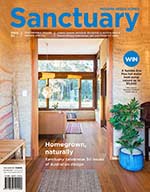Nurturing nature
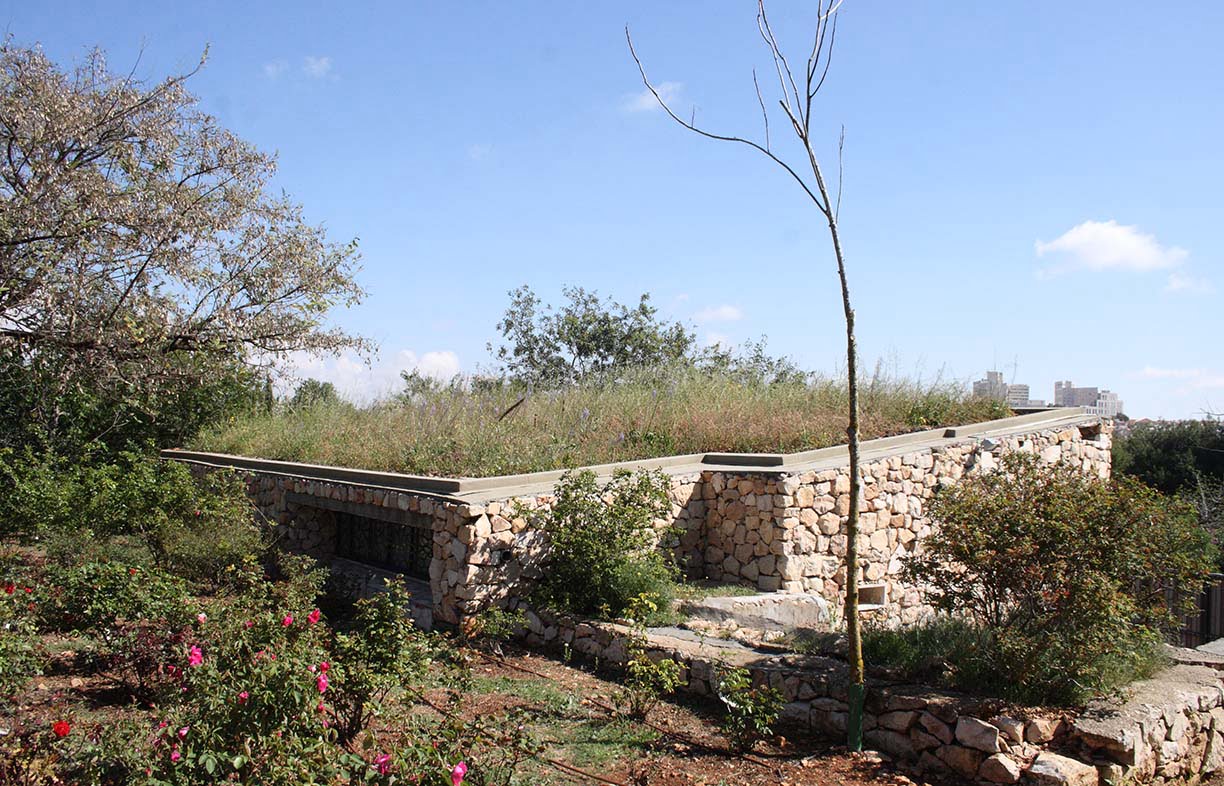
There’s a lot you can do to promote biodiversity when you’re designing a new home or renovation, with clear benefits for you and your family as well as for the natural environment. Ecologist Sarah Bekessy and her colleagues explain what’s possible.
While sustainability is becoming a mainstream concern for those embarking on building or renovating a house, the impacts and opportunities for biodiversity are rarely considered. In Australia, many of our most threatened species and ecosystems rely on habitat near where people live and work, and urban development is considered one of the most destructive processes for nature. House construction and renovation can pose many serious threats to wildlife, through the clearing of land for housing, construction materials that damage habitat and biodiversity in their production, and architectural features that create environments that are hostile to biodiversity.
But it doesn’t have to be this way! There are many opportunities to design a home to protect the existing biodiversity on a house site, or even to bring back species that may have used the site in the past. Our team at RMIT’s Interdisciplinary Conservation Science group developed Biodiversity-Sensitive Urban Design (BSUD) as an alternative approach that aims to generate buildings (and whole suburbs) that have a positive effect on their local biodiversity. Let’s have a look at how you can incorporate BSUD in your project, whether you live in the city, on a suburban block or on rural acreage.
Step 1: Investigate your site
A key reason why renovation and construction can be damaging for biodiversity is that it is rarely considered during the design and planning stage – so get started early. An important first step for BSUD is understanding the current biodiversity values of your site. It’s a good idea to engage an ecologist to help identify rare or interesting plants and animals or to find historical information about species that once lived in the area. Many of these species, especially interesting local plants, can be reintroduced easily onto house sites. Alternatively, talk with your closest Landcare group (start here: landcareaustralia.org.au/landcare-get-involved/findagroup), ‘friends’ group for your local creek or reserve, or your council to obtain information about local plants and animals.
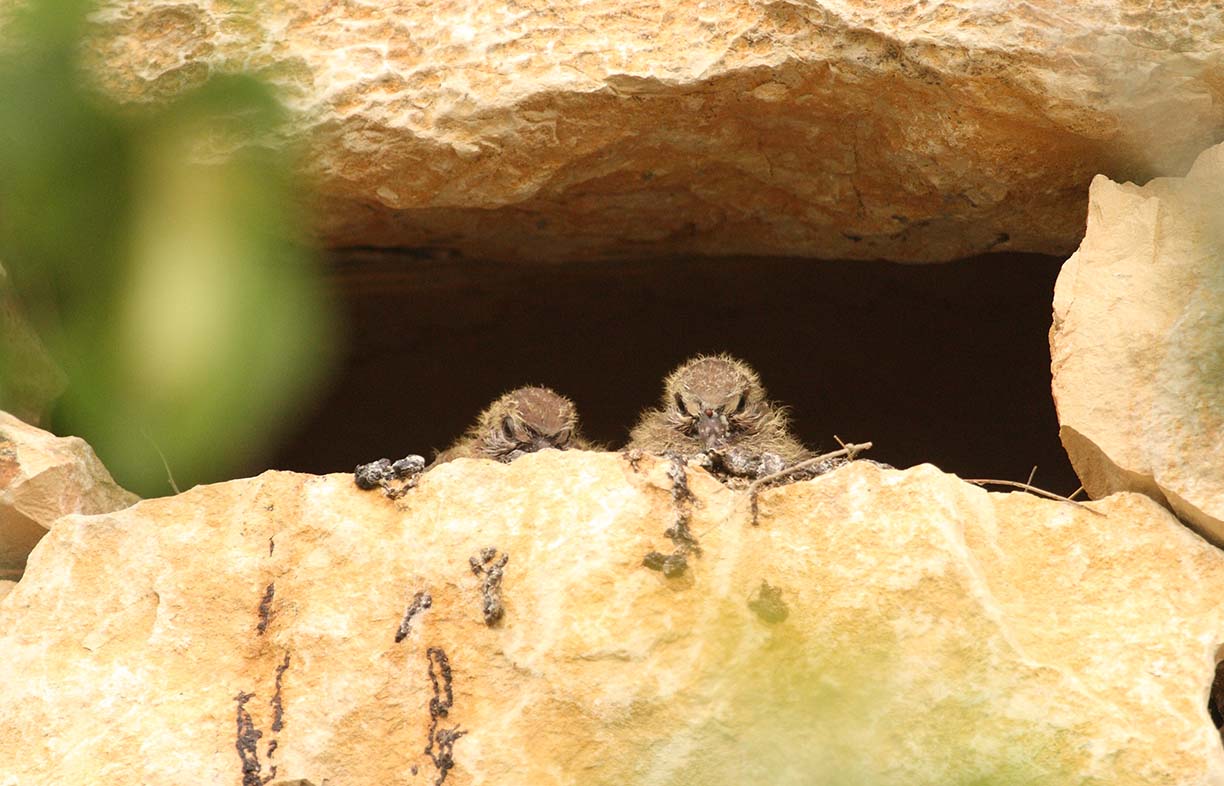
Step 2: Identify your goals
Armed with this information about your site, the next step is to decide on your biodiversity goals. We recommend choosing a set of species on which to focus your design attention. These might be:
- Charismatic species that you would enjoy having around the house (e.g. fairy wrens or chocolate lilies)
- Culturally significant species (e.g. Bogong moths or Indigenous food plants such as murrnong)
- Species that provide a key ecosystem service (e.g. microbats that eat pest insects, or native bees to boost pollination)
- Species that act as an ‘umbrella’ for other species (e.g. providing habitat for growling grass frogs will likely benefit other frog species).
Goals might also include identifying invasive species to discourage from the site, such as blackbirds, Indian mynas or high-threat weeds. Providing a range of food and shelter resources and considering their spatial arrangement on your site can not only attract the target species you have in mind, but also direct less desirable creatures away from your living spaces, for example directing snakes to wilder areas of the garden.
Step 3: Design for your chosen species
Once you’ve picked your biodiversity goals, you can identify the key resources your chosen species need and any local threats to them (see box on p85 for some examples). The next step is generating design options to meet those requirements. This is partly about spatial planning – for example, positioning the house or extension to encourage interaction with nature or to help the site act as a wildlife ‘corridor’. It’s also about including specific architectural and landscape design features that link to your biodiversity objectives.
Mitigating threats
Some design features aim to mitigate threats to biodiversity, such as predation by cats or foxes, collision with cars or windows, and light pollution. Some suggestions include:
Protection from predators: Cats allowed to roam outdoors cause an enormous amount of damage to wildlife. Instead, you can design your house so that your cat will be content inside by providing strategic window ledges, sunny indoor spaces and secure outdoor cat courtyards or runs [Ed note: see ‘Purr-fect design’ in Sanctuary 41 for more]. Gardens can also be designed to provide shelter for wildlife from other outdoor predators like foxes, for example placing bird baths up high and planting low prickly shrubs for wildlife to hide in.
Bird-friendly windows: Angling windows downward by 20 to 40 degrees can help avoid bird collisions, as they will see the ground reflected rather than trees and sky. Alternatively, you can install bird-friendly glass, which has cross-hatching visible to birds but not humans. You can also retrofit existing windows by using bird-friendly films with grids of fine lines or dots, install window screens or fine nylon hanging netting, or use external window shading devices to decrease glass reflection.
Bio-sensitive lighting: Light pollution caused by overabundance and poor design of artificial lights in urban areas has been shown to have wide-ranging negative ecological impacts. In particular, lights can disrupt insect and animal foraging, reproduction and migration patterns, and reducing light pollution is becoming a key objective for many cities around the world. It’s not just about less lighting: design options include lighting within a less impactful colour spectrum (low-blue or amber lights are better), carefully considered directionality (targeted lighting rather than floodlighting) and adaptive lighting that responds to residents’ movements, dimming or switching off when not needed.
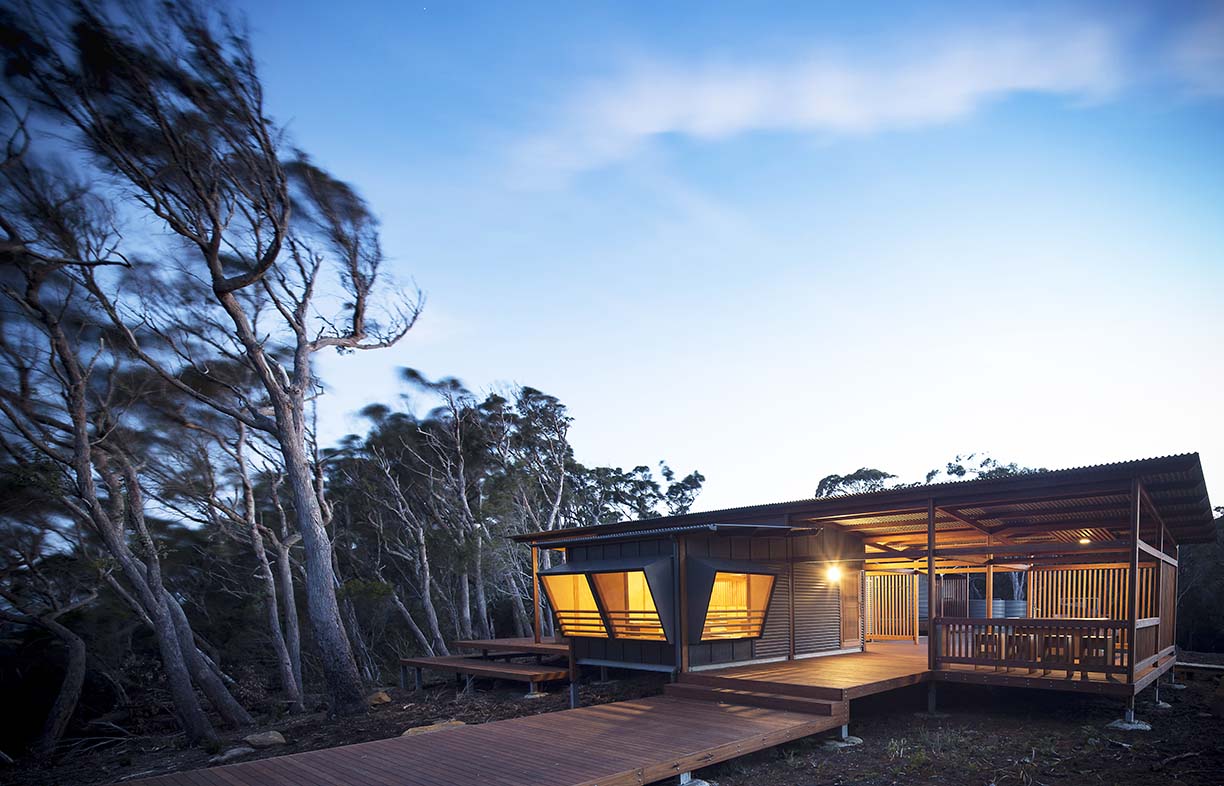
Providing resources
There are many opportunities to incorporate habitat, even within the structure of a house, including the following suggestions:
Biodiverse rooftop or vertical gardens: Installing a garden on part of your roof or walls can reduce the heating and cooling requirements of the house while providing habitat for plants and animals. Try to include diverse local vegetation and incorporate features such as rocks, logs or nesting boxes to provide opportunities for wildlife to feed and shelter.
Design for native bees: Australia has roughly 1500 native bee species! Native bees need food and water resources (including pollen and nectar from a diversity of plants) and also places to live. Many native bees make their nests in tunnels that they dig underground, in hollow or pithy stems of grasses and reeds or by boring cavities into logs, clay or sandstone surfaces. Incorporating these materials into your building or landscape design by using mud bricks and sandstone blocks, providing logs and patches of bare ground in gardens, and incorporating insect hotels can help provide habitat for bees and other native insects.
Nesting places: Tree hollows are the preferred nesting habitat for many native animals, including some birds, bats, possums, gliders and reptiles. Because this habitat feature can be rare in urban areas, providing a substitute in the form of nesting boxes can be an important way to support hollow-dependent fauna. Nesting boxes are available from many plant nurseries or online and can be installed on walls, roofs or in trees, depending on the species you’re trying to attract. Nesting cavities can also be designed into the eaves and walls of a house to provide habitat without causing damage to the structure or conflicting with building occupants.
Make the most of your garden
A well-planned garden can complement a biodiversity-sensitive house design, providing habitat for species through careful planting and provision of resources such as nectar, fruits and seeds, bird baths, frog ponds and nesting boxes. Landscaping features such as gabion walls or strategically placed rocks provide shelter and habitat for lizards and other small animals.
Remember that plants are an intrinsic part of biodiversity in their own right! You can design a garden with a diverse set of plants, aiming to have things flowering for as much of the year as possible to provide floral food for insects and other animals all year round. Plants such as native grasses will provide nest constructing materials for birds and larval feeding sites for butterflies. Succulent plants that naturally catch water in their leaves provide drinking areas for bees, and you can choose flowers specifically aimed at attracting local native bees.
Returning to your biodiversity goals will guide decisions about the specific resources that your target species require and the threats that you want to avoid. For example, fairy wrens need mid-storey shrubs and ground cover, but cats will need to be excluded.
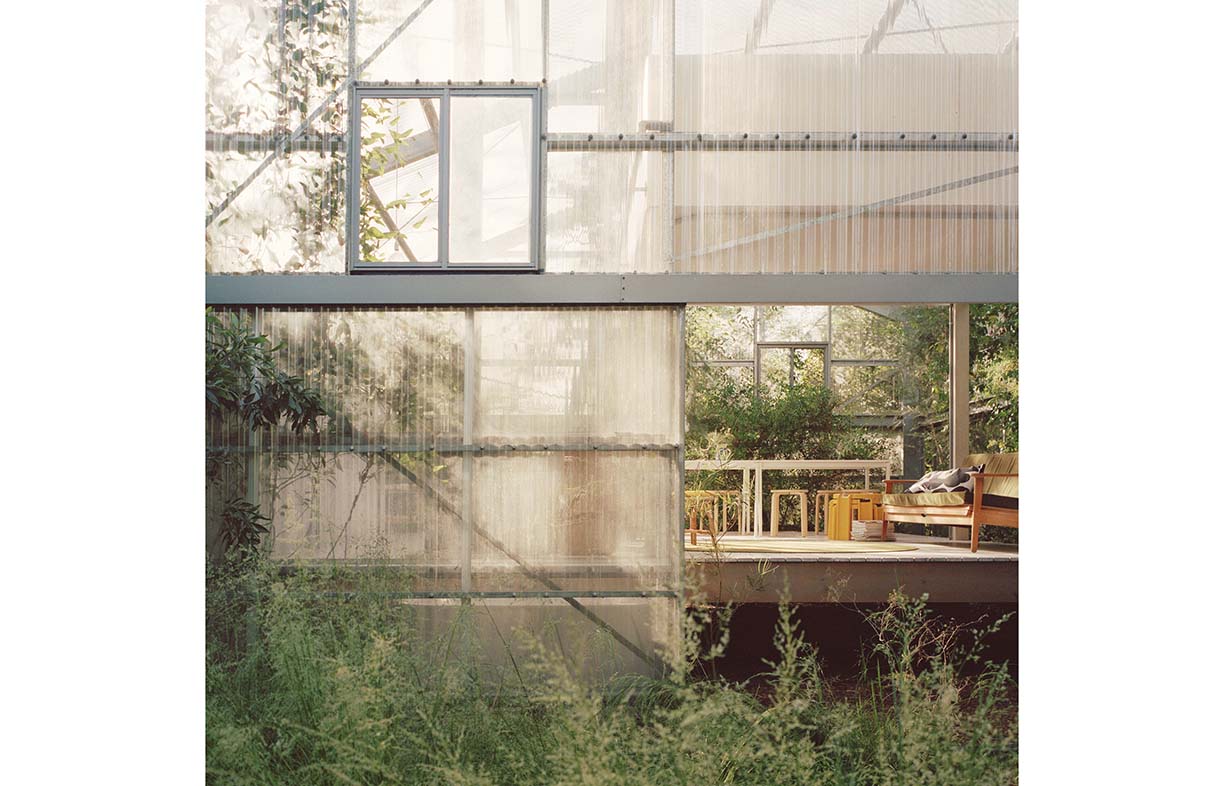
Risks and unwanted effects
Of course, nature can come with risks and even some negative effects; it can be smelly, noisy and potentially damaging to infrastructure. The additional fire risk posed by vegetation adjacent to houses will be at the forefront of many people’s minds after the recent catastrophic Australian bushfire season. Fortunately, many of these risks and unwanted effects can be addressed with careful planning and design. For example, fire risk can be managed through selecting native and non-native species that are fire suppressing (search online for plant lists for your area, such as this one of Victorian species: apsvic.org.au/fire-resistant-and-retardant-plants), and infrastructure damage can be avoided by planting shallow-rooted species in strategic locations.
Clever design can also prevent damage to buildings caused by animals. For example, cockatoos can be deterred from chewing on deck timber by stringing fishing line to make it hard for the birds to land; alternatively, planting hakeas and casuarinas might distract cockatoos from timber railings by providing more palatable options.
Construction materials
The choice of construction materials is also important. Biodiversity is starting to be considered more commonly in product life cycle assessments; as far as possible, select products whose biodiversity impacts over their life cycles have been minimised (such as timber certified by the Forest Stewardship Council). Any product that has lower carbon emissions will also be better for biodiversity in general, given that climate change poses a major threat to many species and ecosystems around the world. Don’t be afraid to ask suppliers where your materials are coming from and how they are taking biodiversity into consideration. The more these questions are asked, the more industry is encouraged to question and to innovate.
What’s in it for you?
The extra time (and possibly money) required to consider biodiversity when designing a home may seem like one step too far on the sustainability journey. But there are some very compelling reasons to bother.
First, having everyday nature experiences can be incredibly good for you, with benefits ranging from improved mental health and wellbeing, through to reduced risk of heart disease and cancer. Children with greater exposure to nature have reduced risk of asthma and allergies and improved cognitive development. Adults are more likely to sleep better and live longer.
Second, features such as green roofs and walls can substantially reduce the heating and cooling needs of your house and can deliver other ecosystem services such as water filtration.
And finally, in this age of eco-anxiety, being part of the solution to the extinction crisis rather than part of the problem can be a much-needed positive experience. Designing houses that nurture nature while providing their residents with such a remarkable range of benefits is surely worth considering.
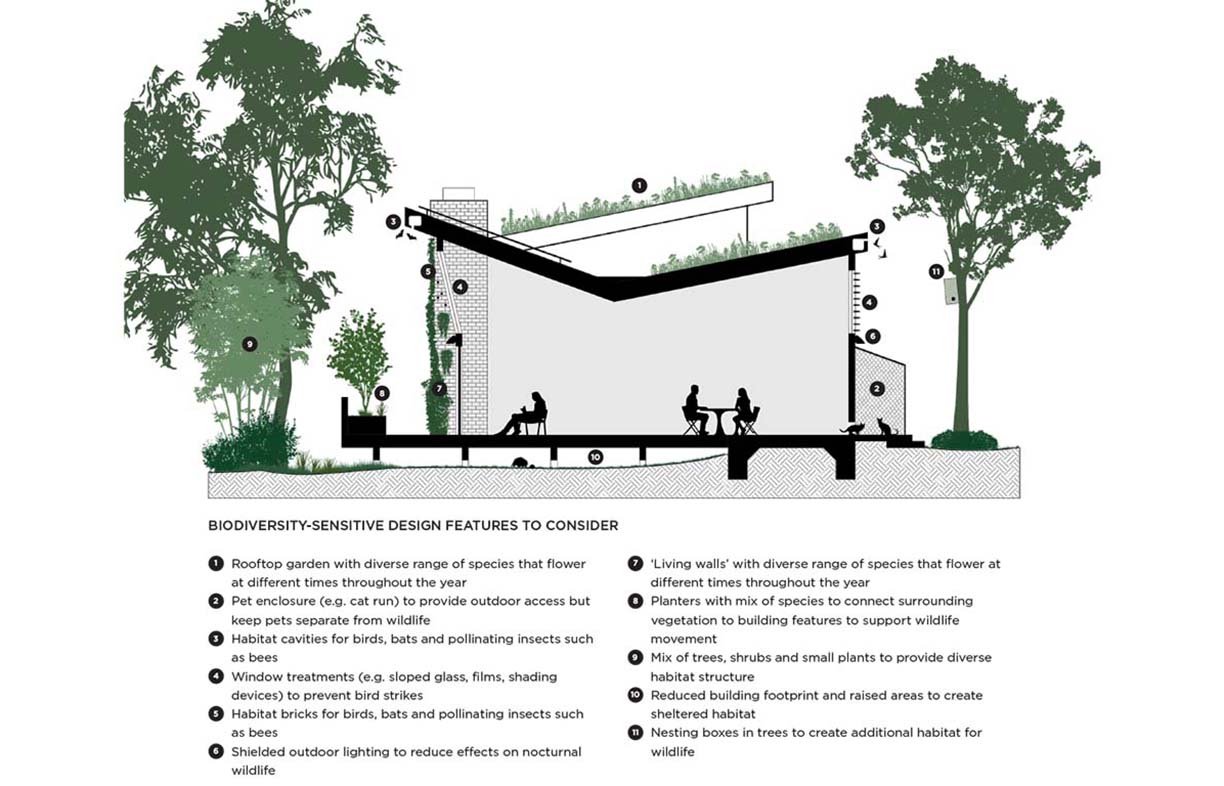
About the authors
Sarah Bekessy is a professor at RMIT University, interested in using interdisciplinary approaches to solve environmental challenges. She leads the Interdisciplinary Conservation Science group (ICON Science). Sarah receives funding from the National Environment Science Programme Clean Air and Urban Landscapes and Threatened Species Recovery Hubs.
Georgia Garrard is a senior lecturer and research fellow at RMIT University, where she focuses on developing tools to deliver better outcomes for nature in human environments.
Sarrah Hurley is a founding director of Hurley Architects in Brisbane, where she works to improve biodiversity outcomes through architecture and education.
Casey Visintin is an architect and wildlife conservationist who researches the impacts of the built environment on ecological systems.
Freya Thomas is a research fellow in ICON Science at RMIT. She loves plants and is interested in how to incorporate more plant diversity into urban areas.
Holly Kirk is also a research fellow in ICON Science at RMIT. She is fascinated by how animals move and behave in urban spaces and how we can use ecological knowledge to design better cities for people and nature.
Further reading
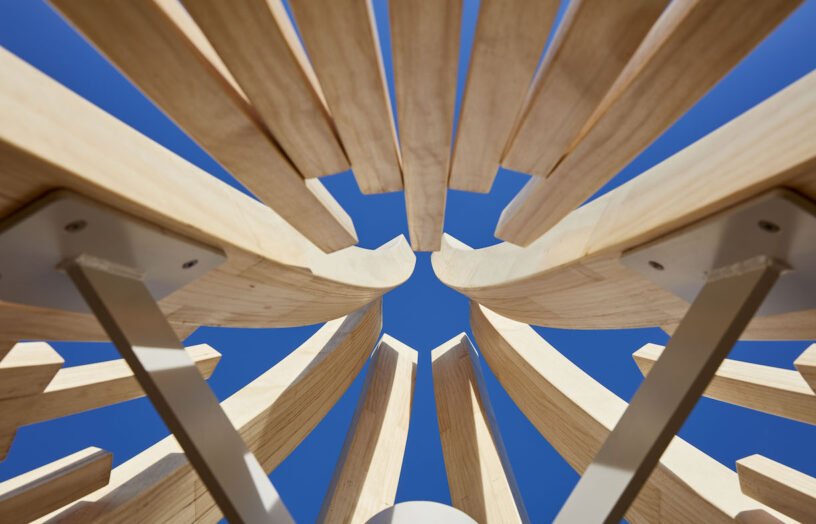 Ideas & Advice
Ideas & Advice
In praise of Accoya
Native hardwoods are beautiful, strong and durable, but we need to wean ourselves off destructive forestry practices. Building designer and recreational woodworker Dick Clarke takes one hardwood alternative for a test run.
Read more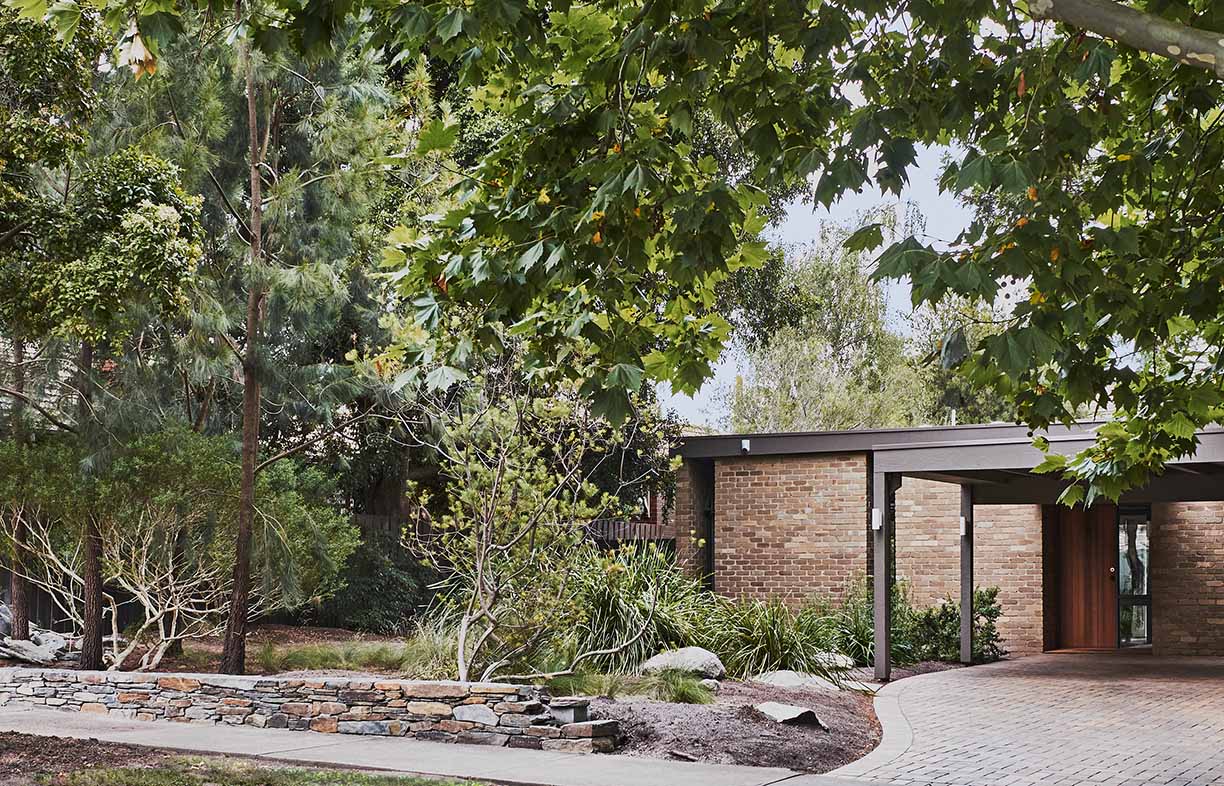 Ideas & Advice
Ideas & Advice
Energy efficiency front and centre: A renovation case study
Rather than starting again, this Melbourne couple opted for a comprehensive renovation of their well laid out but inefficient home, achieving huge energy savings and much improved comfort.
Read more


